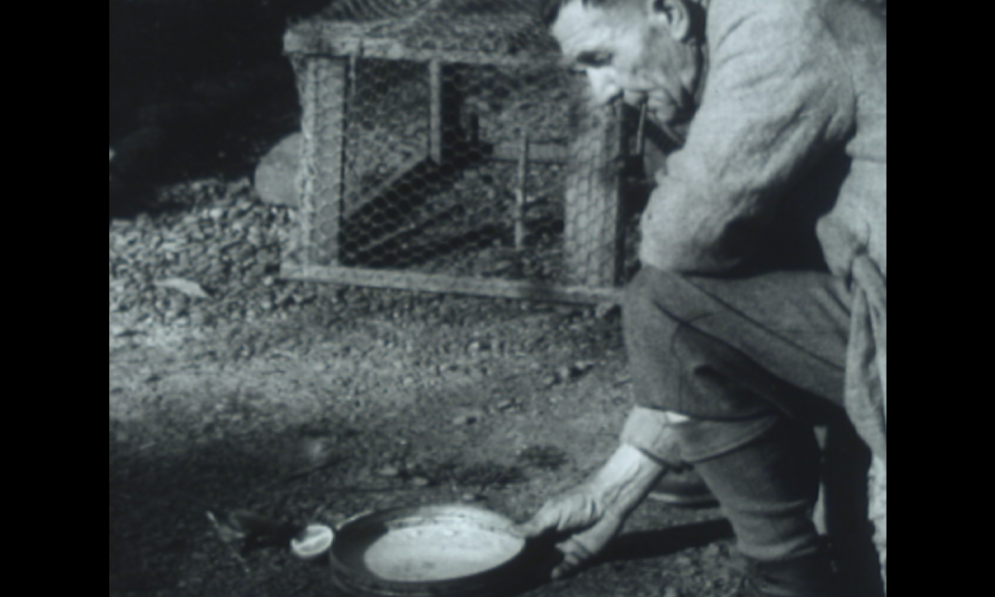Who established Forest & Bird 100 years ago and why? We look at the life and times of founder Capt Ernest “Val” Sanderson. By Caroline Wood
Forest & Bird magazine
A version of this story was first published in the Autumn 2023 issue of Forest & Bird magazine.
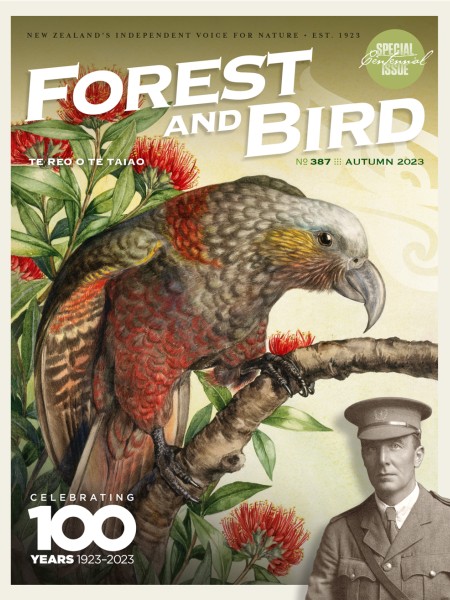
Fired up by his successful campaign to protect the flora and fauna of Kāpiti island, and at the urging of prominent conservationists and scientists of the time, Captain Ernest “Val” Sanderson founded the Native Bird Protection Society at a public meeting in Wellington on 28 March 1923. The Society’s original objectives were to obtain “unity of control in all matters affecting wild life” and advocate for a bird day for schools.
Sanderson’s friend and former Prime Minister Sir Thomas Mackenzie was elected President, and its first Vice-Presidents were newspaper owner Sir George Fenwick, Wellington College headmaster JP Firth, and the renowned naturalist William Herbert Guthrie-Smith.
An Executive was appointed to advise the new Society, made up of leaders in the fields of ornithology, entomology, agriculture, and forestry. All of them worked as volunteers. Annual membership was five shillings for adults and one shilling for school children.
The first member was Arthur Leigh Hunt, a Wellington businessman, who was given receipt No 1. Important women supporters included Perrine Moncrieff, Elizabeth Knox Gilmer, and Lily Daff. The society was renamed the Forest & Bird Protection Society of New Zealand in 1934.
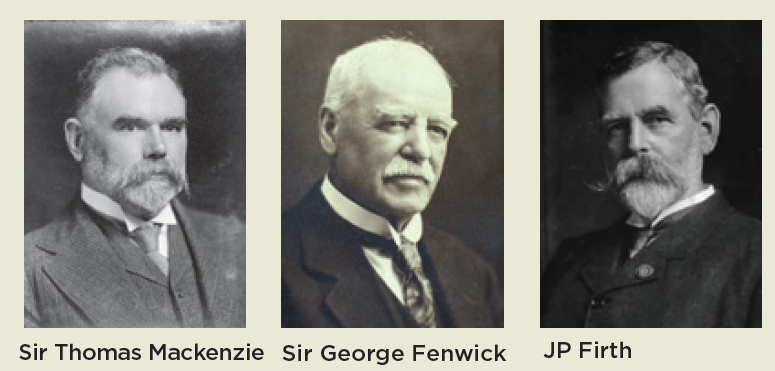
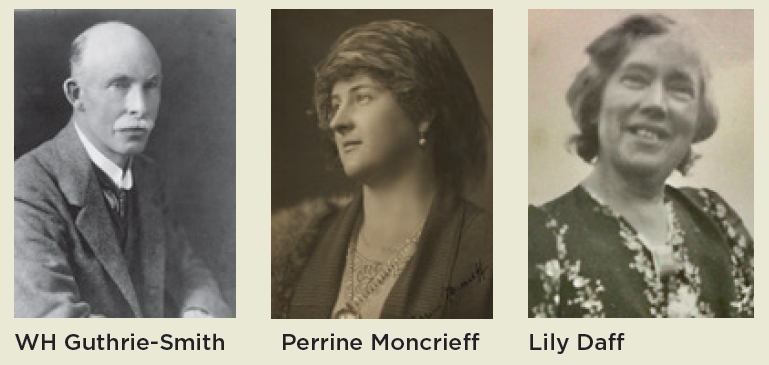
Sanderson was born in 1866 and attended Wellington College before serving his country in two wars and becoming a successful businessman.
In 1893, he witnessed his older brother Louis shooting their abusive father William Spreat, who had attacked the pair with a knife and a poker. The matter was deemed “justifiable homicide” after Spreat exonerated Louis in a deathbed deposition to police.
Founding the Society at 57, Sanderson dedicated the rest of his life to the cause of nature conservation. He was a gifted communicator and campaigner who spoke up passionately for the birds and bush until the day he died.
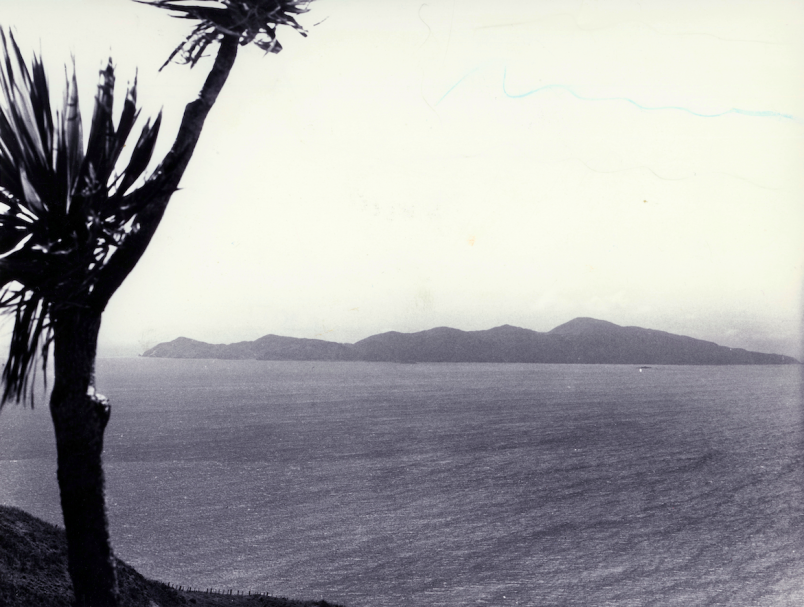
View of Kāpiti Island from the mainland in the early 20th century. Image supplied
Island of dreams
"May Kāpiti Island, one of the few remaining bird and bush resorts, prosper so that our children and children’s children may see and learn something of our once wonderful birdlife."
Sanderson’s conservation zeal was lit by a forest-cloaked island north of Wellington rich in Māori and colonial heritage, an ancient place where moa and kākāpō once roamed. He knew Kāpiti Island well, having travelled there as a child, and deeply cherished its native birds. But, during a visit there in 1914, he was incensed to find the country’s oldest nature sanctuary falling apart.
He rattled off a series of letters to government ministers warning that he would get the press involved if the Internal Affairs Department didn’t act. Under pressure, the department agreed to have the goats and cats destroyed and to erect a fence to stop the sheep on private land at the north of the island wandering into the sanctuary.
Sanderson then headed off to serve in the First World War believing the fight to have been won. But, in 1922, when he returned to Kāpiti to check on progress, he found the sanctuary in a mess.
"Forest & Bird's formation and continued success marked a watershed in the history of nature conservation in New Zealand."
He made a clandestine trip to the island because the government refused to give him the required permit, probably knowing he would be upset by what he found. Sanderson headed across in a boat from the mainland accompanied by a newspaper reporter and botanist. He was shocked to discover 3000 sheep and about 2000 goats had destroyed the undergrowth, and oppossums had devoured the kōtukutuku wild fuchsia trees and were devouring berries of all kinds.
Sanderson saw red. He gave the government no peace until fences were erected, noxious animals destroyed, a qualified caretaker appointed, and countless trees and shrubs planted. This allowed the native habitat to recover, and, over time, Kāpiti became the glory that it is today.
“I don’t know who this chap Sanderson is, but he’s not going to dictate to me,” said the Minster of Lands at the time. But Sanderson had friends in high places, including newspaper owner Sir George Fenwick, a founding member.
Sanderson later said, “I was going to dictate to him because the Press was at my back.” From the 1920s, the irrascible conservationist was a regular visitor to Kāpiti Island, carrying out planting and pest control, sometimes staying overnight with his friends Utauta and Hona Webber, who farmed the northern end.
About 1929, Sanderson made a conservation film called Glimpses of Nature on the island featuring the Webber family feeding native birds. Sanderson died in 1945, aged 79, and is buried at Ōtaki Cemetery, overlooking his beloved Kāpiti Island.
Military service
"A remarkable New Zealander, Captain Ernest Valentine ‘Val’ Sanderson emerged from two wars to become a leading figure in the fight to protect New Zealand’s natural heritage."
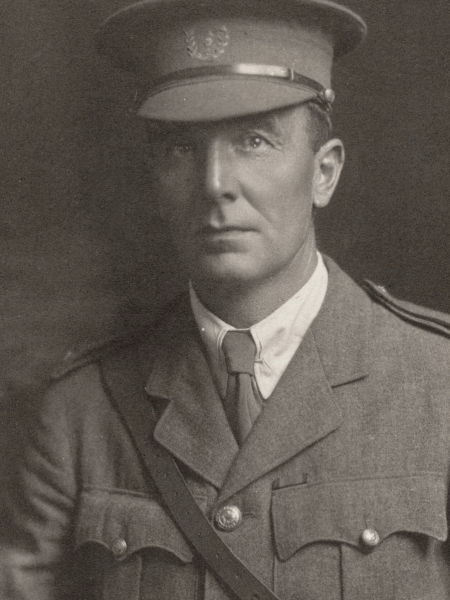
Forest & Bird founder Captain Ernest "Val" Sanderson.
Sanderson first served in the South African War (1899–1902), where he excelled as a Quartermaster-Sergeant for the No 12 Company (Wellington section), 5th contingent, New Zealand Mounted Rifles.
At the outbreak of the First World War in 1914, Sanderson was 48 and too old to enlist. So he pretended to be five years younger so he could serve his country for a second time. After a number of applications, he was finally accepted and sent to Egypt. There he served as a Quartermaster and Honorary Captain.
His command and organisational abilities were to become invaluable after the war as he went into battle to save New Zealand’s fast disappearing forests and birds.
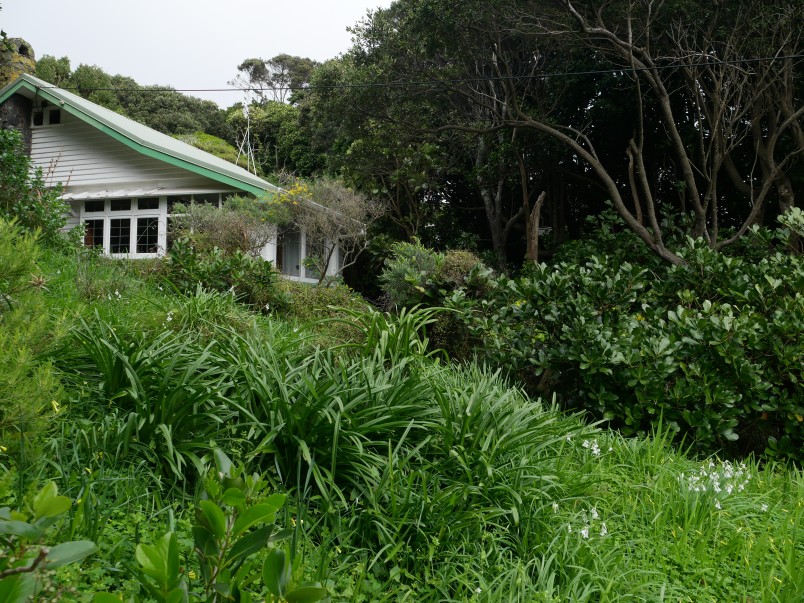
Sanderson's home in Paekākāriki. Image Caroline Wood
Paekākāriki life
"The late Captain E.V. Sanderson – Val to his family and friends – was one of New Zealand’s outstanding men; for he perhaps more than anyone else aroused our awareness of the danger to our priceless heritage of birds, trees, and soil."
In the 1920s, Sanderson moved to Pingau Street, Paekākāriki, living there until his death. He married his second wife Nellie and fathered two daughters, Nancy and Ruth, in his 70s. The family lived in a modest house on the dunes overlooking Kāpiti Island.
From his home, he carried out much of Forest & Bird’s administrative work, hammering out a stream of letters and articles on his typewriter before posting them to government ministers, newspaper editors, and members. Sanderson would reportedly cart hundreds of Forest & Bird magazines in a wheelbarrow to the local Post Office, which “had to be upgraded from Postmistress to Postmaster” such was the load placed on postal authorities.
Sanderson planted hundreds of native trees on the dry barren sandy soils of his Paekākāriki home, transforming it into a small patch of native bush with 70 different species of plants. Within 10 years, it had grown 5m high, an effort considered by some “to be little short of a biological wonder”.

Sanderson's rat trap. Image courtesy of Justin Jordan
Sanderson’s forest garden is still thriving today, and his old home remains almost unchanged since the 1940s. Sanderson fed native birds that came to his garden with home-made bird feeders. He trapped for rats using a modified weighted iron trap and constructed an irrigation system to water his trees. He built red-spotted concrete mushrooms so visitors could sit and listen to the birds, and designed and constructed a Māori pātaka entrance gate to his property. He was known to heliograph across to the Kāpiti caretaker about the birds he saw flying from the island across his land.
In 1938, Sanderson was appointed honorary supervisor of the AT Clarke
Reserve, a conservation area on Paekākāriki Hill overlooking the village. On 29 April and 30 April this year, the local community unveiled a tribute to Sanderson and his life’s work, naming part of the newly restored Waikākāriki Wetland in the village after Forest & Bird’s founder.
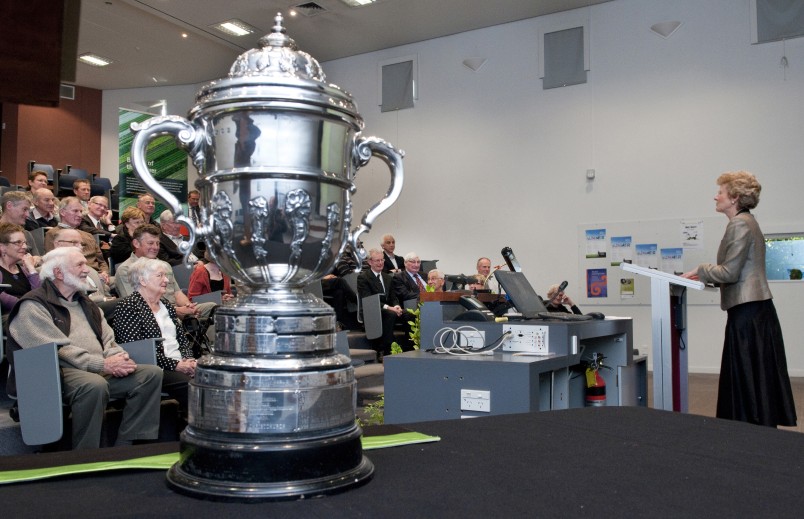
Presentation of the Loder Cup. Image supplied
Loder Cup
"He was a man of experience and hard knocks – in fact a man of steel – but the idealist side of his nature found fruitful expression in his single-minded devotion to the sacred cause of preserving what is left of the flora and fauna of Old New Zealand."
The Loder Cup is one of New Zealand’s oldest conservation awards. It acknowledges individuals and groups who make an outstanding contribution to conserving the native plants of Aotearoa.
In 1938, Forest & Bird’s Executive resolved to nominate Sanderson for the award, but he expressed reluctance and the matter was dropped. Then, in 1944 Sanderson was nominated by members of the Royal New Zealand Institute for Horticulture, who said he had made a considerable contribution in founding and leading the Society, including editing 74 issues of its journal.
The citation also mentioned his efforts to protect Kāpiti Island from the menace of goats and other mammals, and raising the problems of soil erosion. However, on learning he was being nominated, the ever-modest Sanderson let it be known he would refuse to
accept.
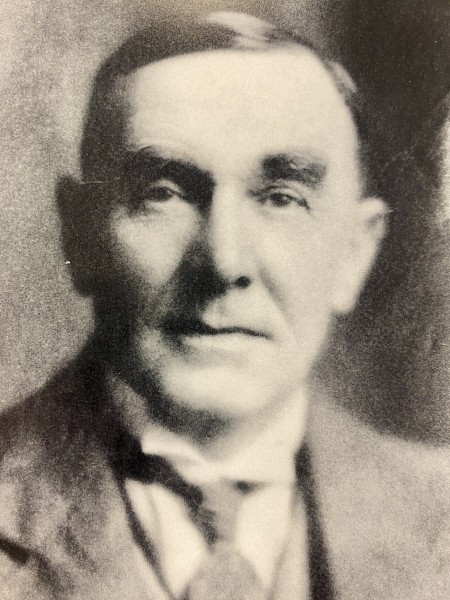
Captain Ernest Val Sanderson. Image Forest & Bird archives.
Sanderson died the following year, and the 1946 Loder Cup was awarded to the Forest & Bird Protection Society, in “perpetual memory” of Ernest “Val” Sanderson.
It was a fitting tribute to a man who had dedicated the final two decades of his life to the cause of nature preservation.

